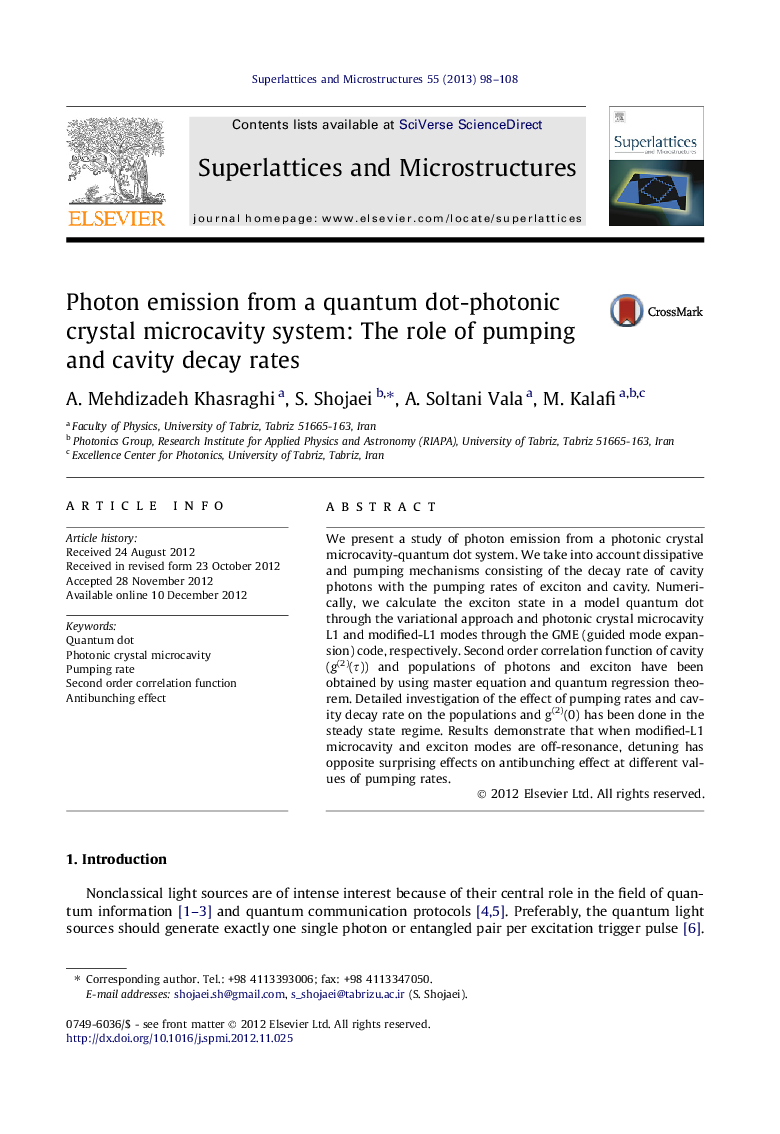| Article ID | Journal | Published Year | Pages | File Type |
|---|---|---|---|---|
| 1553839 | Superlattices and Microstructures | 2013 | 11 Pages |
We present a study of photon emission from a photonic crystal microcavity-quantum dot system. We take into account dissipative and pumping mechanisms consisting of the decay rate of cavity photons with the pumping rates of exciton and cavity. Numerically, we calculate the exciton state in a model quantum dot through the variational approach and photonic crystal microcavity L1 and modified-L1 modes through the GME (guided mode expansion) code, respectively. Second order correlation function of cavity (g(2)(τ)) and populations of photons and exciton have been obtained by using master equation and quantum regression theorem. Detailed investigation of the effect of pumping rates and cavity decay rate on the populations and g(2)(0) has been done in the steady state regime. Results demonstrate that when modified-L1 microcavity and exciton modes are off-resonance, detuning has opposite surprising effects on antibunching effect at different values of pumping rates.
Graphical abstractSecond order correlation function at τ = 0 as a function of quantum dot for different cavity pumping rates for the fundamental mode of modified-L1 microcavity for shift parameter of 0.2a.Figure optionsDownload full-size imageDownload as PowerPoint slideHighlights► The photon emission from a photonic crystal microcavity-quantum dot system is studied. ► Dissipative and pumping mechanisms have been considered. ► Second order correlation function of cavity (g(2)(τ)), and the populations of modes are introduced. ► A fully detailed investigations are given in the steady state regime under incoherent continuous excitations. ► We found that the detuning has opposite surprising effects on antibunching effect in the different values of pumping rates.
